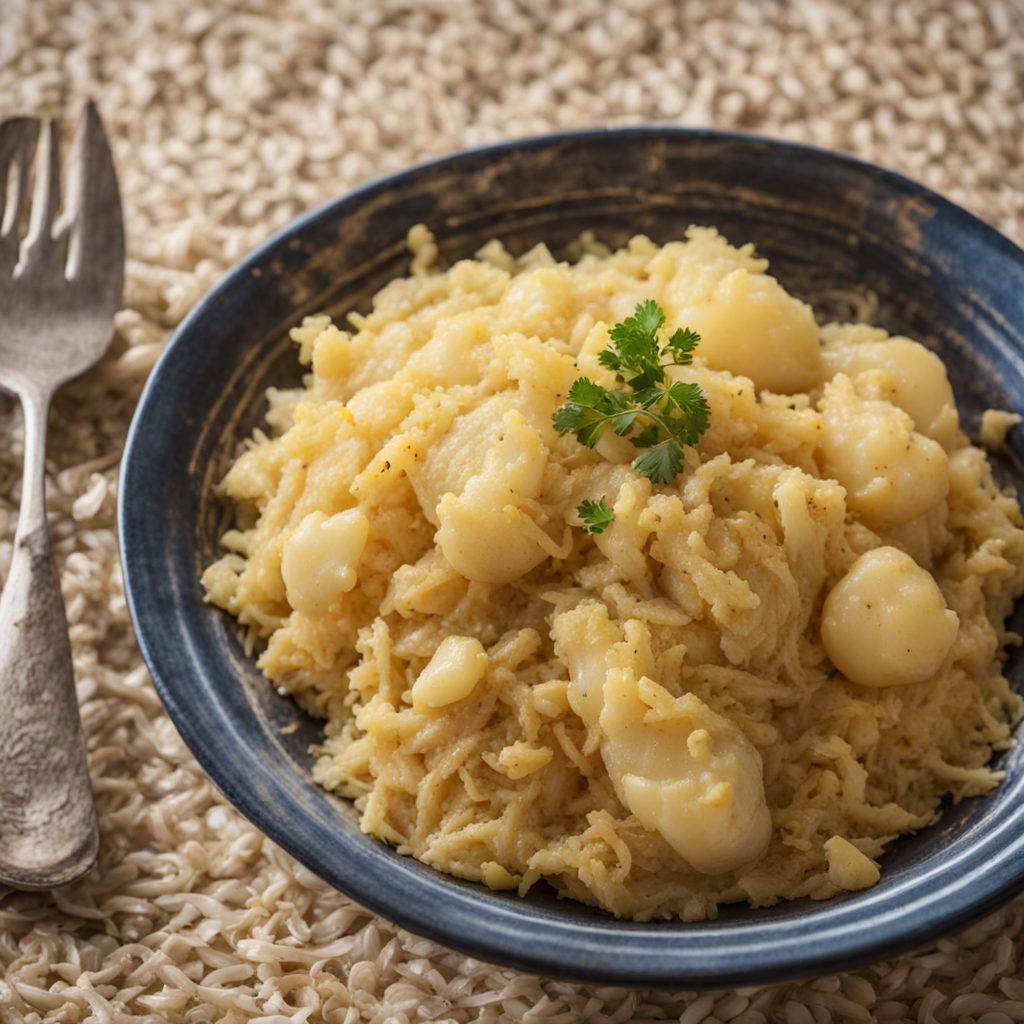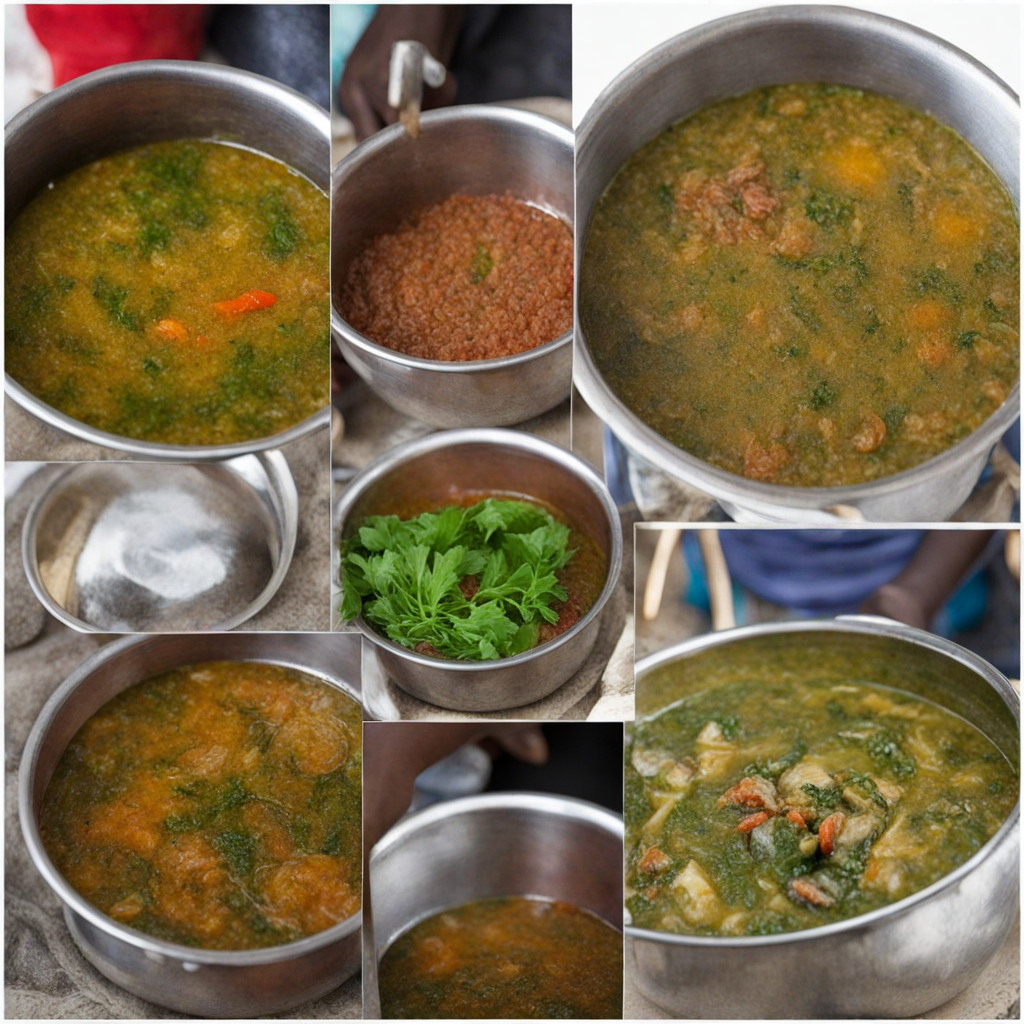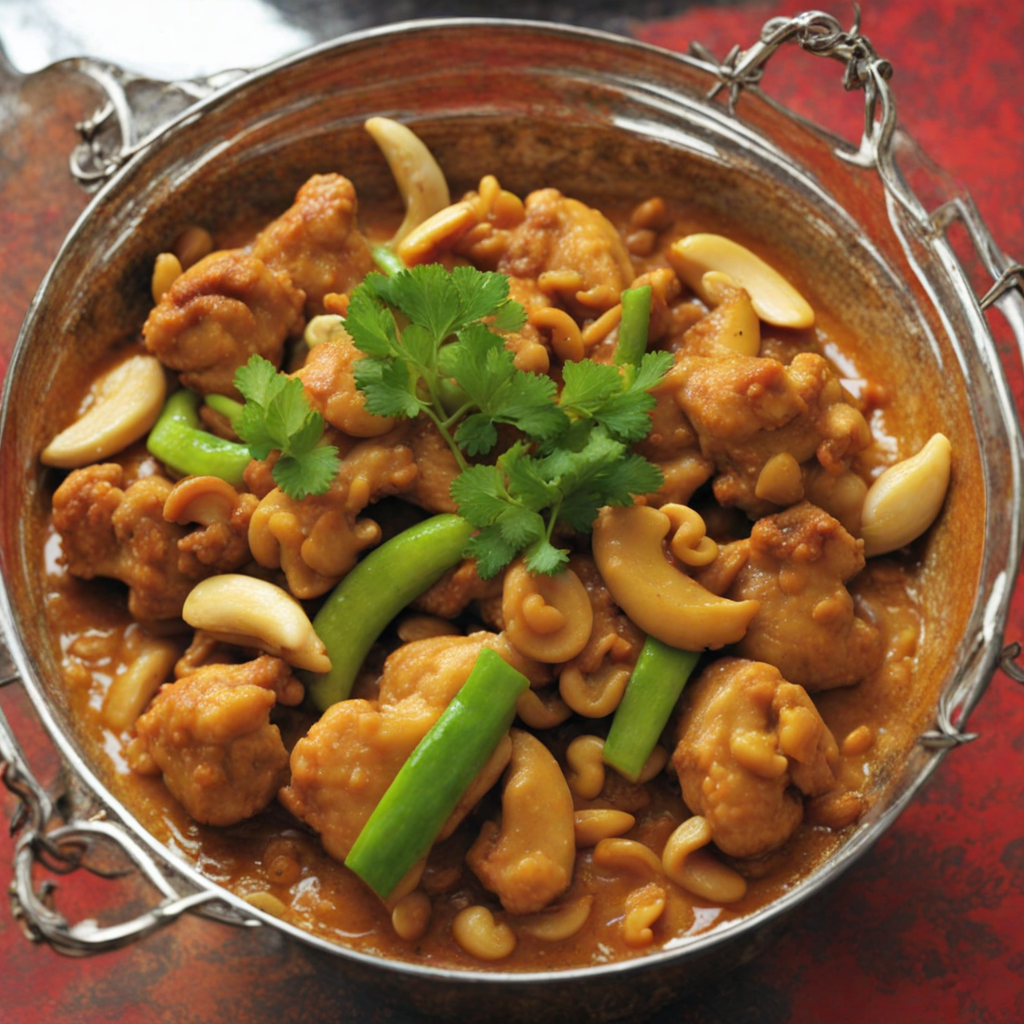Bacalhau a Bras
Bacalhau à Brás is a delightful dish that showcases the unique flavors of Guinea-Bissau, bringing together the essence of traditional Portuguese cuisine with local ingredients. At its core, this dish features bacalhau, or salted cod, which is a staple in many Portuguese-speaking countries. The cod is carefully desalted, cooked until tender, and then shredded into fine pieces, creating a rich base that serves as the canvas for the dish's vibrant flavors. The combination of fresh herbs, particularly parsley, adds a burst of freshness, while the subtle heat from green chilies elevates the overall taste profile. The preparation of Bacalhau à Brás involves sautéing finely chopped onions and garlic in olive oil, creating a fragrant foundation that complements the cod. Once the cod is incorporated, the dish is further enriched with the addition of thinly sliced potatoes that have been fried until golden and crispy. This not only adds texture but also a satisfying crunch that contrasts beautifully with the softness of the cod. The final touch comes from the binding of the ingredients with beaten eggs, which are poured over the mixture and gently cooked to create a creamy, cohesive dish. What makes Bacalhau à Brás truly special is its ability to balance flavors and textures in every bite. The savory cod mingles with the sweetness of the onions, while the crispy potatoes lend a satisfying crunch. Finished with a sprinkle of black olives for an extra layer of flavor, this dish is often served with a side of fresh salad, making it a wholesome and hearty meal. Each forkful offers a taste of Guinea-Bissau's rich culinary heritage, inviting food lovers to explore the delightful intersection of Portuguese and West African cuisines.
How It Became This Dish
Bacalhau à Brás: A Culinary Journey through Time in Guinea-Bissau Origins The dish Bacalhau à Brás, while widely recognized as a staple of Portuguese cuisine, has found a unique interpretation in the coastal nation of Guinea-Bissau. The roots of Bacalhau can be traced back to the 16th century, when Portuguese explorers began to venture into the Atlantic, discovering new lands and resources. One of the most significant discoveries was the cod fish, which thrived in the cold waters of the North Atlantic. The preservation methods of salting and drying made it possible for cod to be transported over long distances, and soon it became a vital part of the Portuguese diet. In Guinea-Bissau, a country with a rich tapestry of cultural influences—African, Portuguese, and indigenous—Bacalhau à Brás evolved uniquely. The dish’s foundation remains the same: salted cod. However, the local adaptation incorporates regional flavors and ingredients, making it a reflection of Guinea-Bissau’s vibrant culinary identity. Ingredients and Preparation The traditional Bacalhau à Brás is known for its harmonious combination of shredded salted cod, finely chopped onions, and straw fries, all bound together with scrambled eggs and garnished with black olives and parsley. In Guinea-Bissau, while the core ingredients are preserved, the dish may also include local elements such as palm oil, spices like piri-piri, and even the addition of vegetables, which reflect the agricultural practices and palate of the Bissau-Guinean people. The preparation begins with desalinizing the cod, a process that requires soaking the fish in water for several hours or overnight, changing the water multiple times to ensure the salt is adequately removed. Afterward, the fish is cooked, flaked, and combined with sautéed onions and garlic before being mixed with the fries and eggs. The dish is often finished with a sprinkle of local herbs, enhancing its flavor profile and giving it a distinctly Bissau-Guinean flair. Cultural Significance Bacalhau à Brás holds a significant place in the culinary landscape of Guinea-Bissau, symbolizing the fusion of cultures that defines the nation. The Portuguese influence is evident, yet the dish also serves as a canvas for local traditions and ingredients. In Guinea-Bissau, food is not merely sustenance; it is a medium through which stories, histories, and identities are expressed. Family gatherings, celebrations, and communal meals often feature Bacalhau à Brás, making it a dish that transcends mere nourishment. During significant events, such as weddings and religious holidays, the preparation of Bacalhau à Brás becomes a communal affair, with family members contributing to the cooking process, sharing stories, laughter, and forging connections that bind generations. Moreover, Bacalhau à Brás is a representation of resilience. The salted cod was historically a food for sailors and fishermen, and its presence in Guinea-Bissau signifies the adaptation of a once foreign ingredient into something quintessentially local. The dish showcases the ability of the Bissau-Guinean people to embrace and transform external influences, creating a culinary identity that is both diverse and cohesive. Development Over Time As Guinea-Bissau navigated its colonial past and fought for independence in the mid-20th century, food became an essential element in the nation’s cultural revival. The culinary landscape transformed, with a growing emphasis on local ingredients and traditional methods of preparation. Bacalhau à Brás became a symbol of pride, representing not just a connection to Portuguese heritage but also a celebration of Bissau-Guinean identity. In the years following independence in 1973, the nation faced numerous challenges, including political instability and economic difficulties. Nonetheless, the culinary traditions persisted, with Bacalhau à Brás remaining a cherished dish. Local chefs and home cooks continued to innovate, infusing modern techniques while honoring the traditional preparation methods. With the advent of globalization, Guinea-Bissau has seen an influx of influences that have further enriched its culinary scene. Restaurants and food stalls have begun to offer unique interpretations of Bacalhau à Brás, incorporating international flavors and contemporary plating styles, while still paying homage to its origins. This evolution reflects a broader trend in which traditional dishes are reimagined to meet the tastes of a new generation. A Modern Perspective In recent years, Bacalhau à Brás has gained attention beyond Guinea-Bissau, as food enthusiasts and travelers seek authentic culinary experiences. The dish has found a place on the menu of various international restaurants, introducing the flavors of Guinea-Bissau to a wider audience. This exposure has not only elevated the status of Bacalhau à Brás on the global stage but has also sparked conversations about the importance of preserving culinary heritage amidst a rapidly changing world. Moreover, the rise of social media has enabled chefs and home cooks to share their versions of Bacalhau à Brás, creating a vibrant community of food lovers who appreciate the dish's history and cultural significance. Food blogs, Instagram accounts, and YouTube channels dedicated to Bissau-Guinean cuisine have flourished, fostering a renewed interest in traditional recipes and cooking methods. Conclusion Bacalhau à Brás is more than just a fish dish; it is a narrative woven through the fabric of Guinea-Bissau’s history, culture, and identity. From its Portuguese origins to its adaptation in a vibrant African context, Bacalhau à Brás embodies the spirit of resilience and creativity. It reflects how food can transcend borders, bringing together diverse cultures while simultaneously fostering a sense of belonging and community. As Guinea-Bissau continues to embrace its culinary heritage while navigating the complexities of modern life, Bacalhau à Brás remains a beloved dish, a testament to the enduring power of food as a cultural connector. It is a reminder that every bite tells a story—a story of adaptation, celebration, and the unbreakable ties that bind people together through the universal language of food.
You may like
Discover local flavors from Guinea-bissau







